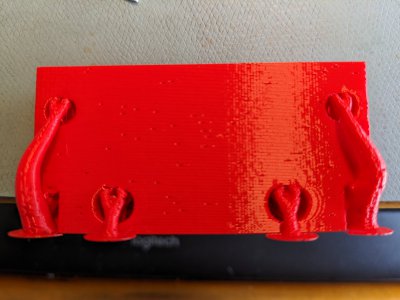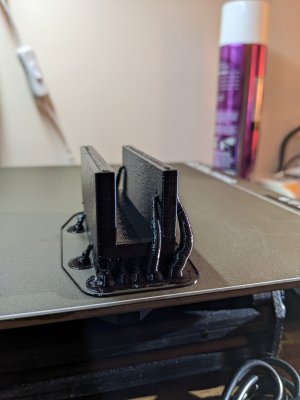- Joined
- Dec 18, 2019
- Messages
- 6,464
I designed a read head bracket for my X DRO scale. Gone through a few iterations to refine the design. I had been printing them with the U pointing up, but with horizontal through holes for the fasteners. In draft mode, this resulted in some not very nice looking screw holes and counter bores. They were kind of flattened on the top and bottom edges. Reducing layer height helped some, but still not very good. I used a drill and end mill to open up the holes. There were supports inside the holes, which I had to hammer out using a punch.
I then thought, what if I print the part laying on its side? Then the holes would be in the horizontal plane and would print better. The U would then be unsupported. But then I remembered seeing @Ken226 using organic supports on overhangs. So I gave it a try. Came out surprisingly well.
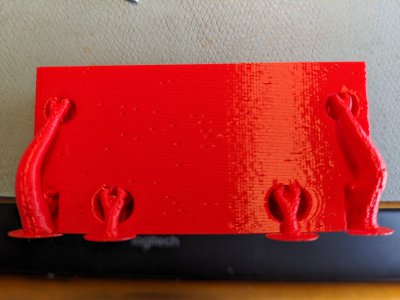
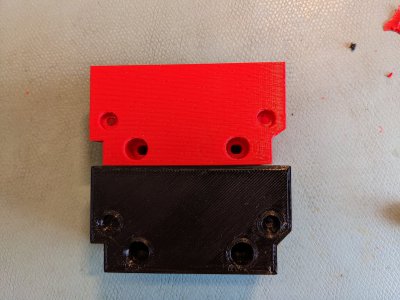
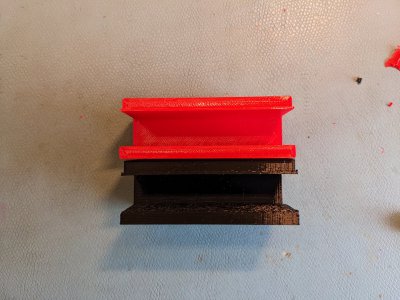
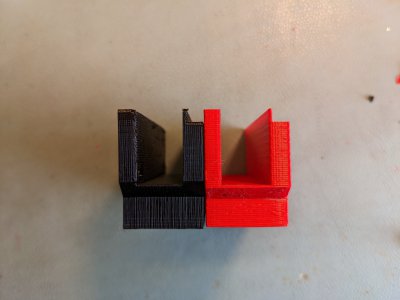
So don't be afraid to have an overhang. That thin little section is 1mm in the black, and about 0.8-0.9mm for the red, due to the change in layer orientation. My CAD design has it being 1mm thick.
I then thought, what if I print the part laying on its side? Then the holes would be in the horizontal plane and would print better. The U would then be unsupported. But then I remembered seeing @Ken226 using organic supports on overhangs. So I gave it a try. Came out surprisingly well.




So don't be afraid to have an overhang. That thin little section is 1mm in the black, and about 0.8-0.9mm for the red, due to the change in layer orientation. My CAD design has it being 1mm thick.


